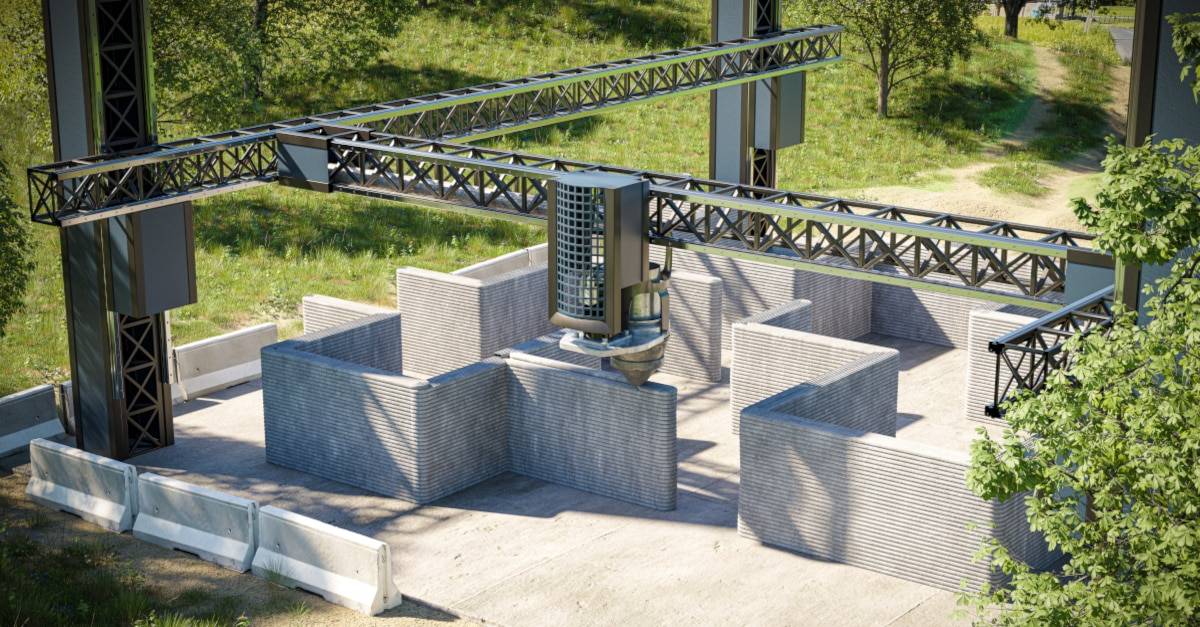This reality is unfolding right before our eyes, suggesting a potentially transformative direction for the future of house building and new construction methods.
3D Printed Industry Facts
The 3D-printing construction market is projected to grow at a significant rate. The global 3D printing construction market size was valued at USD 1.094 billion in 2021. It is expected to reach USD 585.84 billion by 2030, growing at an impressive CAGR during the forecast period (2022-2030).
The Asia-Pacific region dominates the global 3D printing for construction market, accounting for the largest share of this growing industry. With its position as a global manufacturing hub, this region is poised to make significant use of 3D printing technology. But there are other markets exploring this new trend, such as the city of Dubai, which has set a goal to have 25% of all new buildings 3D printed by 2030.
Pioneers in the 3D Printing Industry
3D-printed houses have burst onto the scene thanks to several pioneers who have experimented with the technology and pushed its boundaries. Companies such as Yingchuang Building Technique, COBOD International A/S, ICON, Apis Cor, XtreeEand and MX3D are already in the process of making these homes a reality.
A Chinese company and leader in 3D printing construction technology, Yingchuang Building Technique, also known as WinSun, has made headlines around the world for its advances in the field. The company claims to have printed ten houses in 24 hours and has showcased projects including 3D printed villas and cement based apartment buildings.
Elevate Your Wealth Game: Empowering UHNWIs for Simplified Asset Management. Altoo Platform Preview
Green Houses from the Ground Up
Sustainability is one of the key benefits of 3D printed homes. The technology reduces construction waste by using only the exact amount of locally sourced materials needed for the project. In addition, the ability to incorporate energy efficient designs and use environmentally friendly materials can significantly reduce the carbon footprint of a building project. This approach aligns with the growing global awareness of environmental sustainability, making 3D printed homes a truly 21st century innovation that aligns with our broader goals for a greener planet, using 3D-Printed concrete.
Paving the Way to Affordable Housing
The cost effectiveness of 3D printed homes is another key benefit. 3D printing can reduce construction costs by 30-50%, while drastically reducing construction time. This could usher in a new era of affordable housing, addressing a global issue facing many cities.
By harnessing the power of this technology, we could open the doors to home ownership for millions of people who would otherwise be priced out of the market, providing a meaningful response to one of the most pressing social issues of our time.
Unleashing Creativity in Real Estate
In addition, 3D-printed homes opens up new possibilities in design. Because the printer follows a digital blueprint, architects and designers can introduce complex and innovative structures that would be difficult or impossible to create using traditional methods. This allows for unprecedented creativity and personalization.From curved walls to intricate interior details, the design possibilities with 3D printing are virtually limitless, giving architects a new sandbox of innovation to play in.
The net zero energy, heat pumps in 3D-printed houses, 3D printing effect on the compressive strength of concrete structures with complex floor plans are the next project milestones.









